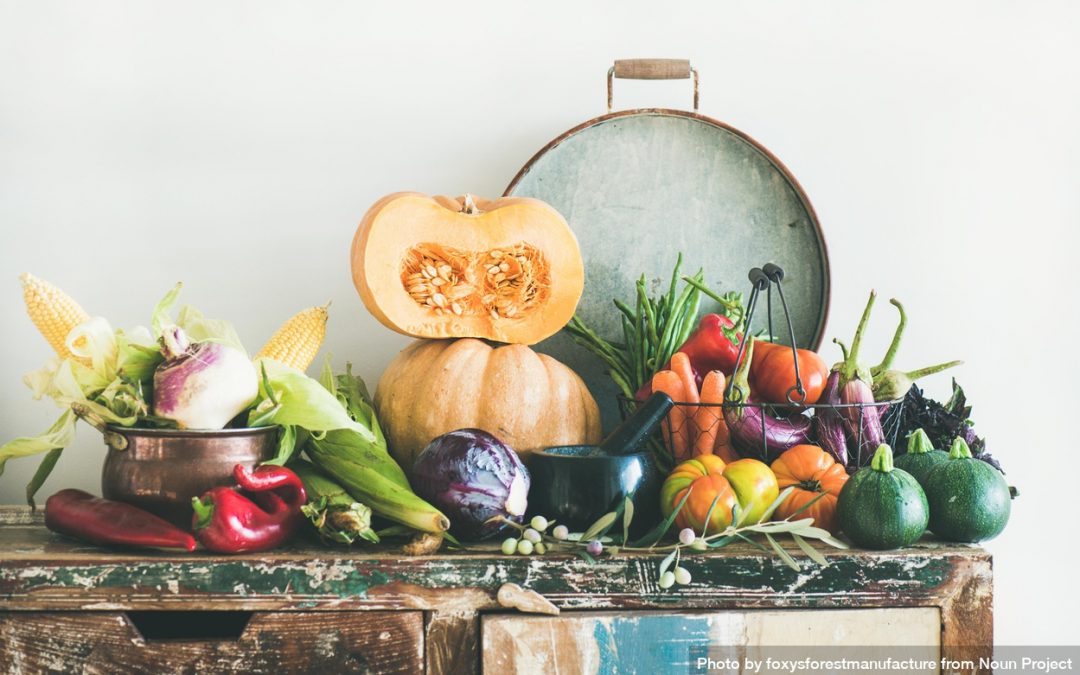We’re always trying to find new ways to cut our food waste here at Green Action Centre. Households contribute more than 20% of our country’s food waste, meaning that the choices I make in the home can have a big impact on greenhouse gas emissions (and my wallet). If you’re a “typical Canadian family” of four, you spend $1,200 a year on food that goes in the garbage (or hopefully, the compost). While I am a dedicated composter, too many things that could have been eaten still end up in the bin. I find myself playing freezer Jenga trying to jam in another FlashFood deal before it goes bad. So, I’ve decided to try a challenge for January: I’m calling it a “Pantry challenge”. I am severely limiting how much I will spend on food for the month, and focusing on eating what I have. Otherwise, it will eventually go bad and get thrown out! Respecting our Earth means respecting the hard-won produce harvested from plants and from the animals we raise or hunt.
Will you join me in doing a pantry challenge this January 2021?

The “Rules”
(but make it your own!) Do it for a week, a month, two months: whatever works for you. If you have a lot of food stored up, go longer; if you’re in a small apartment and just have a fridge freezer, for example, a week might be more than enough. Set your budget to a level that you can afford and maintain. Here’s how I’m setting up my pantry challenge.
- Meal plan using what I have in the house
- Start with the most perishable items and use them up first
- Purchase primarily fresh items that won’t last the full month: milk, eggs, fresh produce, bread
- Set a budget: Choose a budget that will allow you to get what you need (in my case, milk for the baby is a need!), but will make you look to your pantry/fridge/freezer first. I’m using a combination of a weekly goal and an overall monthly budget.

How to Be Successful in Your Pantry Challenge
- Don’t go shopping frequently. It’s so tempting to pick up good deals and sales and delicious-looking items when you’re in the store. Grocery stores spend a lot of money to figure out how to make their produce the most appealing for you, and we’re grateful that they supply the nourishment we need. But, most of us have trouble resisting! So, try to shop no more than once a week or less during your pantry challenge.
- Shop with a list when you go. First make a meal plan (new to meal planning? Here’s one guide on how-to), then figure out what else you need to finish off the plan, then write your list. It helps to organize it by section in the store! If you’re shopping online for pickup or delivery, it’s even easier to resist temptations and track your budget.
- Don’t be afraid of leftovers. Whether you’re just heating them back up to eat as-is or making a new concoction, leftovers are key to pantry challenge success. I find reheating in the microwave convenient, but often leftovers don’t taste as good that way as if you used the oven (or more efficiently, toaster oven), or the stovetop.
- Use recipe-finding tools. There’s a lot of recipe-finding/building tools on the internet to help you figure out what you can make from the weird combination of ingredients you’re trying to use up! Examples include the Advanced search function on AllRecipes.com and Supercook.com. You just input what’s in your fridge/freezer/pantry and it generates a list of recipe ideas!
- Focus on the perishables first, then the odds and ends. I’ve ended up with some odds and ends from various cooking projects or friends offloading items onto me. Real examples from my own kitchen include: six manicotti noodles, one and a half boxes of oven-ready lasagne noodles, a jar of mango chutney, a spice pack I thought looked interesting once, turkey sausages I don’t particularly care for, one small piece of halibut, a giant bag of red lentils because I decided six months ago to learn how to eat beans…You get the picture! By starting with the perishable foods, you keep them from going bad. Then use up the odds and ends while you still have lots of “regular” food to use them with.
- Don’t be afraid of substitutions. Maybe ricotta to make stuffed manicotti isn’t in my budget for this week, but they’re just noodles: I could break them up and toss them in broth to make turkey noodle soup, with the blocks of turkey broth I have frozen in my deep freeze (leftover from our Thanksgiving turkey). Here’s one resource to help you think of more substitutions!
- Don’t “stock up” before or after This is psychologically tricky – knowing a pantry challenge is coming up makes me want to ensure I’ve got certain things in the house ahead of time! And, being low on food in the house makes me want to over-buy once the challenge is over. I’m lucky that I grew up in a food-secure household; for those who did not, it may be especially difficult to have less food around in your home. Please modify this challenge as needed to be psychologically safe for you. However, if you have the financial means to buy the food you need as you need it, try to avoid a rebound effect with your food buying!
If you’re struggling to have enough to eat, this isn’t the challenge for you; please connect with resources like Harvest Manitoba which can help you with emergency food. If you’re in Winnipeg, other food-providing organizations include One Just City (through St. Matthew’s Maryland Community Ministry and Oak Table), Agape Table, and Bear Clan. The Facebook group “Mutual Aid Society Winnipeg” can also help you with a hot meal or produce box once a week with no needs assessment, and has opportunities to reach out for additional support as well.




Recent Comments